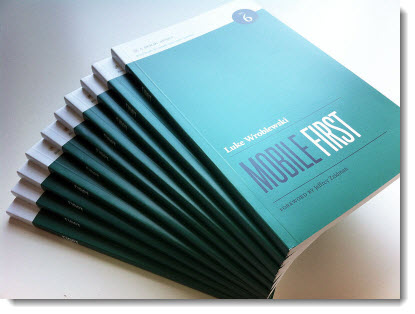Interest is sky rocketing in responsive web design and designing for mobile devices. With the explosive growth the adoption and sale of smartphones and tablets, there is a growing recognition that companies need to come up with an overall approach for how best to manage web properties across multiple platforms: desktop/laptop, tablet, and smart phone. Luke Wroblewski has entered the fray with an outstanding book that outlines a business case for moving in a new direction.
Overall, I agree with Wroblewski’s approach to starting with designing for mobile or smartphone devices first. He makes a compelling argument for doing so by quoting industry titans such as Eric Schmidt from Google and Kevin Lynch from Adobe. In addition, Wroblewski cites numerous statistics citing the rapid sales of smartphones and tablets as well as creating an excellent timeline of how devices have changes rapidly since 2006.
From that business case, Wroblewski moves onto describing the design capabilities and constraints inherent with mobile devices. From screen size to performance, Luke does an excellent job of describing the landscape that designers must keep in the forefront as they make design decisions. Wroblewski then goes onto describe the incredible capabilities inherent with mobile devices from GPS to Near Field Communication (NFC) to directions via a digital compass. All along the way, examples are given with screenshots to help the reader easily envision what is being described by the author.
Other areas that Wroblewski covers include navigation. He makes a strong case for mobile users relying primarily on their thumbs to move around the screen of their phones. In addition, great examples are given for solid form design and layout.
I strongly recommend this book to those in the field of user experience. It is written for those who need to make a compelling argument to their team or company about the need to move towards a mobile first approach. In addition, practical examples and guidance are given for design considerations. While the author admits that code examples are not provided nor is the book intended for programmers, the principles and examples should not only benefit user experience designers but those with a more technical bent as well.
